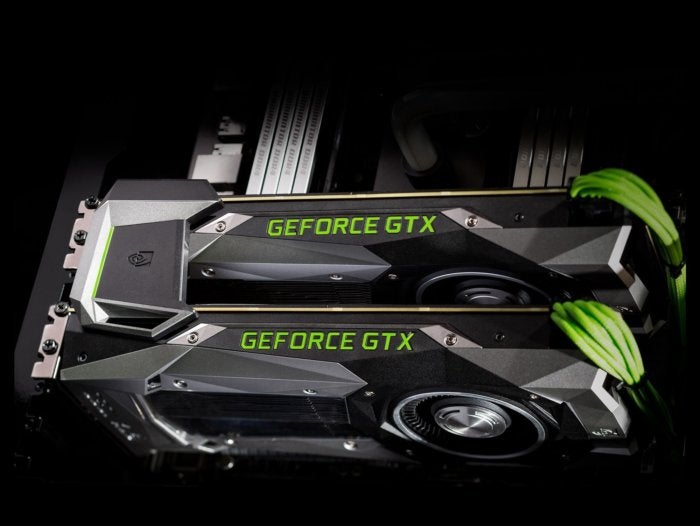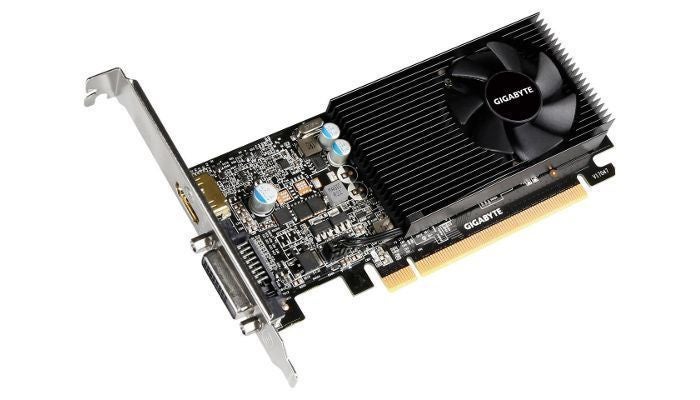
Contents
Every Nvidia GeForce graphics card you can buy for PC gaming
Nvidia’s GeForce graphics cards range from slim HTPC-boosting options to hardware that crushes PC gaming at 4K.
Slide 1 of 9

Different graphics cards are made for different tasks. Both Nvidia and AMD offer a wide range of hardware, from GPUs built to bolster the video capabilities of home theater PCs to lofty high-end cards that crush games even at 4K resolution.
Here, we’ll go over every GeForce graphics card Nvidia offers today, sharing information about the type of performance you can expect from each. In general Nvidia’s current generation of GTX 10-series graphics cards offers extreme power efficiency compared to AMD’s rival Radeon RX series, and Nvidia backs up its hardware with a potent array of software, including the GeForce Experience hub, Ansel super-screenshots, and ShadowPlay video capture. GeForce cards can also be used to stream your PC games to your TV via Nvidia’s powerful Shield console.
Looking for general buying advice and more of a compare-and-contrast versus AMD? PCWorld’s guide to the best graphics cards for PC gaming can help you select the best option for you, no matter your budget.

GIGABYTE GeForce GT 1030
$69.99 MSRP $69.99VIEW
on AmazonEVGA GeForce GT 1030 SC
$79.99 MSRP $79.99VIEW
on Amazon
The only current Nvidia card unworthy of the “X” in “GTX,” the GT 1030 can help speed up image editing on productivity machines while simultaneously unlocking the ability to play e-sports games like Overwatch and League of Legends at 1080p with solid frame rates. Playing most AAA PC games will probably push the GT 1030 past its limits unless you severely dial down graphics settings, and potentially the resolution. This modest, highly efficient graphics card draws its power from your motherboard alone, meaning you don’t need an extra power supply pin to use it. That feature, combined with Nvidia’s potent video playback capabilities, make the GT 1030 a great option for home theater PCs, too.
The GT 1030 starts at $70 on Amazon, with sleek HTPC-friendly single-slot models like the EVGA GT 1030 going for $80. Its AMD competitor is the slightly more expensive $80-and-up Radeon RX 550. We haven’t tested the GT 1030 yet, but based off the specs, it’s likely to be a wee bit faster than its Radeon rival.
MSI GeForce GTX 1050
$118.15 MSRP $109.99VIEW
on AmazonASUS Geforce Dual GTX 1050 Ti
$161.49 MSRP $154.99VIEW
on Amazon
Moving up the stack, Nvidia’s GeForce GTX 1050 and 1050 Ti are solid entry-level graphics cards, offering performance on a par with the Xbox One and PlayStation 4 in many cases. You can expect modern AAA games to hit frame rates ranging from 30 fps to 60 fps at 1080p, but you’ll need to dial some visual settings down to Medium in most games to approach that upper target. The GTX 1050 Ti delivers roughly 10 percent more performance than the GTX 1050, and both easily surpass AMD’s Radeon RX 560. Another bonus: Most models don’t need an extra power connector.
The GTX 1050 starts around $100 on Amazon and comes with 2GB of memory. It’s a solid option if you stick to e-sports games or can tolerate Medium graphics in AAA games.
Consider stepping up to the GTX 1050 Ti and its 4GB of RAM if you mostly want to play modern games on High graphics settings. It costs around $140 on Amazon, but the memory and performance increase makes it worthwhile. Don’t waste your money on a 4GB GTX 1050 non-Ti.
EVGA GeForce GTX 1060 3GB SC
$189.99 MSRP $189.99VIEW
on AmazonZOTAC GeForce GTX 1060 Mini
$239.00 MSRP $249.99VIEW
on Amazon
Nvidia’s next options are two different graphics cards with, confusingly, the same name. The 6GB GeForce GTX 1060 ($250 on Amazon) is a drop-dead awesome graphics card, delivering flawless 60-fps 1080p gameplay with full visual fidelity, a damned good 1440p/High experience, and even virtual reality support.
Despite its name, the 3GB GTX 1060 ($190 on Amazon) isn’t the same as the 6GB GTX 1060. Yes, it has less onboard memory—and the limited 3GB capacity can sometimes affect performance in some games at 1080p if you crank the eye candy—but it also has lesser internal hardware, offering about 10 percent less performance. If you buy it, stick to 1080p alone, and be aware you may need to turn down texture settings.
The 3GB and 6GB GTX 1060 compete against the Radeon RX 570 and RX 580, respectively, and need a six-pin power connector. AMD’s cards hold a bang-for-buck advantage—when prices aren’t wildly inflated due to Ethereum mining, that is.
Gigabyte GeForce GTX 1070 Windforce
$372.15 MSRP $815.78VIEW
on AmazonAcer Predator XB281HK
$599.99 MSRP $699.99VIEW
on Amazon
Once you move past the GTX 1060, AMD doesn’t have any current rivals to Nvidia’s cards, and it won’t until the Radeon RX Vega series launches in late July.
The GeForce GTX 1070 ($372 on Amazon) delivers performance on a par with the GTX 900-series’ Titan X flagship. Look for it to deliver solid 60-fps 1440p gaming performance at high graphics quality, or a great 1080p experience on a blazing-fast 144Hz monitor. You’d also be able to play some games—mostly older ones—at 4K resolution if you don’t mind dialing down graphics settings, dipping somewhat below 60-fps frame rates, or investing in a G-Sync monitor like the $600 Acer Predator XB281HK. It requires an 8-pin power connector.
Gigabyte GeForce GTX 1080
$498.68 MSRP $649.99VIEW
on Amazon
The GeForce GTX 1080 ($499 on Amazon) delivers an even better 4K experience, though it still falls just shy of 60 fps in particularly demanding games—especially if you crank the graphics to Ultra. It would also shine paired with a 144Hz 1440p display or an ultrawide monitor. Again, tear- and stutter-killing G-Sync monitors go great with these high-end Nvidia graphics cards. The GTX 1080 and it’s bigger brother, which we’ll get to next, need both a 6-pin and an 8-pin power connector.
If you absolutely, positively need to blow past 60 frames per second at 4K resolution with no visual compromises whatsoever, the blazingly fast GeForce GTX 1080 Ti ($700 on Amazon) is the only consumer graphics card in the world that can do it. Accept no substitutes—though if you’re spending this much on a graphics card, definitely drop a little extra to pick up an overclocked, custom-cooled model like the superb EVGA GTX 1080 Ti SC2 ($720 on Amazon).
That said, the ferocious Nvidia Titan XP ($1,200 on Nvidia’s website) outpunches even the GTX 1080 Ti by a few percentage points. This card isn’t meant for consumer use, though—as evidenced by its lofty price tag. Skip it and get a Ti.
Every GTX 10-series graphics card Nvidia offers today is a worthwhile purchase, but the future of GeForce is already coming into sight. At GTC 2017, Nvidia revealed its next-gen “Volta” GPU, and it looks like a monster. This initial tease was limited to the datacenter-focused Tesla V100 GPU, similar to how Nvidia revealed the current “Pascal” GPUs in the Tesla P100—then launched the GTX 1080 a mere month later.
Nobody knows when Nvidia’s next round of GeForce cards will land, with rumors ranging from this fall to sometime in early 2018. Don’t delay buying a graphics cards in anticipation of Volta—but it is coming.
Once again, check out PCWorld’s guide to the best graphics cards for PC gaming for buying advice and more details about where Nvidia’s lineup, well, lines up compared to AMD’s Radeon cards.

